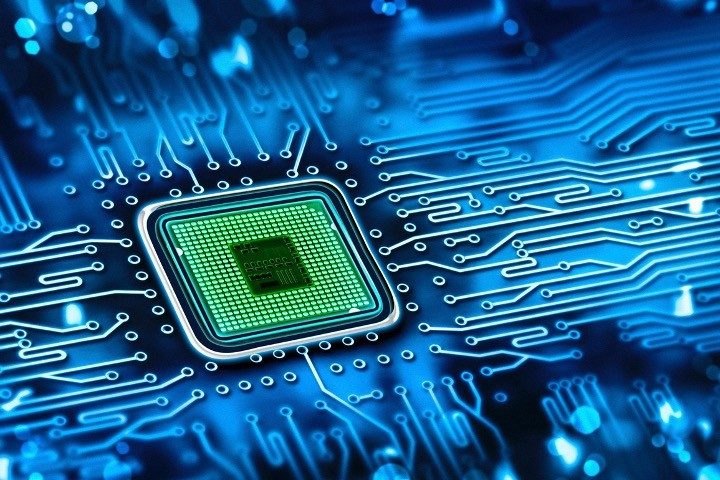
SINGAPORE — In October 2022, the United States unveiled a series of export restrictions on China, thus reducing the sale of cutting-edge semiconductor chips and the advanced equipment required to make them, as well as the transfer of semiconductor expertise from the U.S.
Many observers perceived these sanctions as one of the administration’s more significant attempts to curb China’s technological and military ambitions. After all, advanced semiconductors sustain various military apparatuses ranging from autonomous vehicles to hypersonic weapon systems, and chips are vital for the defense industry and technological developments.
By depriving China of this essential component, the Biden administration hopes to halt China’s semiconductor suite at 2022 levels and deter its military development. U.S. chip equipment suppliers like Lam Research, Applied Materials, and KLA Corporation have temporarily halted sales and services to Chinese chipmakers, while ASML Holding, a Netherlands-based supplier, instructed its U.S. staff to cease liaising Chinese customers pending further notice.
Moreover, U.S. citizens working at Chinese semiconductor companies may have to either sacrifice their citizenship or their job amid rising Sino-U.S. tensions. For instance, Yangtze Memory Technologies Corp has already instructed key U.S. staff to leave the company.
Chinese Chipmakers like the Semiconductor Manufacturing International Corporation (SMIC) — China’s biggest logic-chip producer — will be deprived of machine maintenance and equipment replacement under the new sanctions.
Initially, China will likely have to scramble to find ways to do without U.S. technological know-how and expertise while ensuring its progress in artificial intelligence, quantum, and cloud computing.
That being said, it is presumptuous to think that U.S. sanctions would cripple China in the long term. Take North Korea as an illustration. Despite international sanctions from countries like the U.S., considerable resources were earmarked to obtain bomb technology to build nuclear weapons once political leaders deemed they were key to national security. Other sectors of the country had to make way for the prioritized nuclear weapons program, regardless of economic or political conditions.
Given that Beijing presently views advanced semiconductors as crucial to national defense, the communist leadership is implementing the “whole of the nation” approach and directing national resources to bolster the industry. Many engineers and computer scientists are likely to be deployed to semiconductor design and manufacture, boosted by spying against U.S., South Korean, Taiwanese, Japanese, and European chip firms.
Based on a 2022 RAND Corporation report, China’s military systems depend on older, less-sophisticated chips made domestically on which U.S. export controls will have no considerable effect. If China, the world’s second largest economy, requires more advanced chips for AI-driven weapons systems, it can likely manufacture them, notwithstanding the high costs.
However, many semiconductor industry specialists concur that although China has the technical capability to make cutting-edge chips, it still does not have the commercial capability to increase production. The recent U.S. sanctions would not impact weapons systems so much, but rather would impede the launch of civilian applications like autonomous vehicles.
Suffice it to say that American sanctions and other punitive measures against China would spur the ambitious communist regime to invest more in homegrown semiconductors to wean itself off the U.S. In 2020, Chinese chipmaking and supply were heavily invested in following American restrictions on sales of U.S. technology to companies like Semiconductor Manufacturing International and Hangzhou Hikvision Digital Technology.
Beijing is poised to set aside billions of dollars of investment in the sector under large-scale programs such as its “Little Giants” plan to promote and bankroll national tech champions, as well as advocate for “buy China” measures to overcome U.S. sanctions. The rise of domestic names has by no means escaped the notice of global players in the market. For example, Apple was reported to have mulled over having Yangtze Memory Technologies as its supplier of iPhone flash memory.
“The biggest underlying trend is China’s quest for self-sufficiency in the supply chain, catalyzed by Covid-related lockdowns,” Morningstar analyst Phelix Lee wrote in an email to Bloomberg News. “Amid lockdowns, Chinese customers who mostly use imported semiconductors need to source homegrown alternatives to ensure smooth operations.”
According to 2022 data gathered by Bloomberg, 19 of the world’s 20 fastest-growing chip industry firms from 2021 to 2022, on average, come from China. That figure can be juxtaposed with only eight at the same point in 2021. Orders for chip-manufacturing equipment from foreign suppliers increased 58 percent in 2021 as domestic plants expanded capacity, as figures supplied by industry body Semi revealed.
The Business Times reported that China-based suppliers of design software, processors, and gear crucial for chipmaking are increasing their revenue. Total sales from Chinese-based chip makers and designers rose 18 percent in 2021 to a record of more than 1 trillion yuan, the China Semiconductor Industry Association claimed.
A chronic lack of chips that is restricting output at the world’s largest makers of cars and consumer electronics could also tilt the scales in favor of local Chinese chipmakers, enabling Chinese suppliers to more seamlessly access the international market.
SMIC and Hua Hong Semiconductor, the biggest contract chipmakers, kept their Shanghai-based plants operating at almost full capacity in 2022. Despite the city undergoing a draconian lockdown, cargo flights from Japan transported vital materials and gear to chip plants. SMIC reported a 67-percent rise in quarterly sales, surpassing far-larger rivals GlobalFoundries and TSMC.
In addition, Shanghai Fullhan Microelectronics’ revenue grew 37 percent on average due to a high demand for surveillance products. The video chip designer has indicated its plans to expand into electric vehicles and AI after winning its “Little Giant” designation. Also, design tool developer Primarius Technologies doubled sales on average over the past four quarters, saying it has developed software that can be used to make 3-nanometrer chips.
Putting the matter of long-term profitability aside, Morningstar’s Lee said, the massive capacity buildup from Chinese players will lift their global standing. “There’s little doubt Chinese chipmakers can achieve revenue growth over the next few years from cars, consumer electronics and other devices,” he said.
Notably, U.S. semiconductor firms would most likely be impacted by the sanctions as well, given that many have China as their largest market. China accounts for 27 percent of sales at Intel, 31 percent at Lam Research, and 33 percent at Applied Materials.
Both Applied Materials and Nvidia estimate that the new export sanctions would reduce next quarter’s sales by $400 million. Lam Research — one of Yangtze Memory Technologies Corp’s largest suppliers — surmised that the controls would cut a massive $2.5 billion from 2023 sales.
These drastic reductions come amid a challenging time for the U.S. semiconductor industry, which is experiencing decreasing revenue and rising input costs. One estimate reported that the adverse impacts of U.S. sanctions on research and development and capital investment in the Western semiconductor industry “will exceed Washington’s modest subsidies for the chip industry by a factor of five or more.”
Enforcing export restrictions on China-dominated products like pharmaceutical ingredients would encourage the U.S. to explore “reshore,” onshore, and “friend-shore” manufacturing for those products, as exemplified with the illustration of Japan in 2012.
Rather than persisting in outright reprisals, China may look for substitutes to American U.S. chip technology. However, as other viable options are years away, Chinese nationalization of foreign semiconductor firms could take place, as well as intellectual property theft.
It remains to be seen if recent U.S. chip restrictions will be a lone policy or a series of policies across an assortment of high technology sectors. That being said, if increasing Chinese pugilism in the Asia-Pacific region and more bilateral provocations happen, the world could well see a replay of Cold War dynamics in the years to come.



